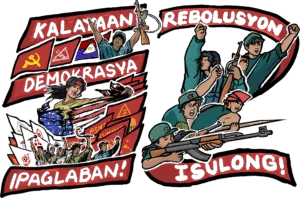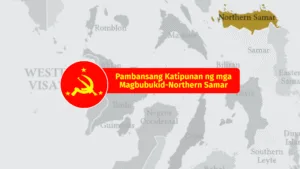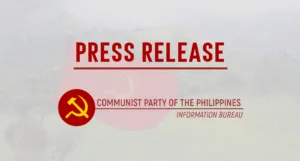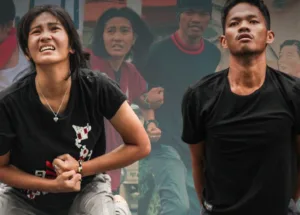CPP Information Bureau
The Communist Party of the Philippines (CPP) today congratulated the New People's Army (NPA) for its recent string of military victories in the Cordillera and Bicol regions saying "these signals great advances in the people's war this 2010."
In the Cordillera, the NPA roundly frustrated the all-out military operations of the Philippine Army's 5th Infantry Division and successfully carried out a series of battles against attacking government forces in the Mountain Province and Abra. Also last January, the NPA engaged the state armed forces in 37 encounters including one ambush, one raid, numerous other military actions as well as defensive turned offensive actions.
Citing reports by local NPA units and other revolutionary organizations, the CPP highlighted the following military actions of the NPA carried out in the month of January in the Ilocos-Cordillera at Bicol regions alone:
- On January 27, with the support of the masses, the NPA ambushed an elite platoon of the 54th IB led by 1Lt. Victor Leopoldo at the vicinity of Mt. Bato in Mainit, Bontoc resulting in the annihilation of five elements and the wounding of another four.
- On January 31, three more troopers of the Pilippine Army's 50th IB were killed in a fight with an NPA unit in Tubo, a southern Abra barangay bordering the Mountain Province.
- On the same day, NPA forces almost wiped out another platoon of the 41st IB in Barangay Lap-ey in Malibcong. Five government troopers were killed and another eight were wounded.
- Last January 14, the NPA successfully ambushed the Special Operations Team of the 2nd IB in Baranggay Taplacon, Camalig, Albay resulting in the death of Pfc. Michael Sacza.
- On January 15, two enemy soldiers belonging to the 49th IB were killed when NPA Red fighters fired upon the military truck in Baranggay Palogtok, Irosin, Sorsogon.
- On the same day, four soldiers belonging to the 9th IB were killed and six others were wounded when their vehicle was ambushed in Baranggay Lalaguna, Mobo, Masbate.
- On January 20, an NPA commando team set an explosion damaging the walls and guardhouse of the 9th IB and the PNP-RMG at Baranggay Armenia, Unson, Masbate.
All in all, at least 28 enemy soldiers were killed in the Cordillera and Bicol regions and 25 others wounded. Four NPA Red fighters were martyred.
The CPP denounced the brutal, destructive ways of the attacking government troops. "In the Mountain Province, ground operations of the 54th IB were accompanied by three days of aerial bombings by helicopter gunships and jet planes, resulting in the destruction of rice paddies and terraces, irrigation canals, and domestic water systems, and the burning of mountainside forests in the towns of Mainit and Guinaang."
In Albay, elements of the special operations team (SOT) of the 901st Brigade abducted Ananias Cardiente Jr and Vicente Moradillo last January 15 in Baranggay Taplacon, Camalig. On January 30, elements of the 2nd ID fired and killed Vergel Mapola Catubig in Baranggay Lawinon, Pio Duran.
"In the face of the government forces' brutal suppression of the people's rights, wanton destruction of the people's economy and utter disregard of the people's interest," the CPP said "the masses in the area and their army have remained undaunted and have been able to fight with virtuosity in guerrilla tactics against the ineffective government armed forces.
"These victories in battle of the NPA belie pratings of the US-Arroyo regime and its top defense and military officials that the armed revolutionary movement will be drastically reduced to inconsequence if not totally defeated by the end of the present term of the ruling regime and at the same time the end of its brutal nine-year "counter-insurgency" program–Oplan Bantay Laya.
The CPP said that the recent victories of the NPA in the Cordillera and Bicol regions are only a few of the many victories nationwide. "With these victories, the people's war is on track to developing from the present stage of strategic defensive to the stage of strategic stalemate by the middle of the decade."













